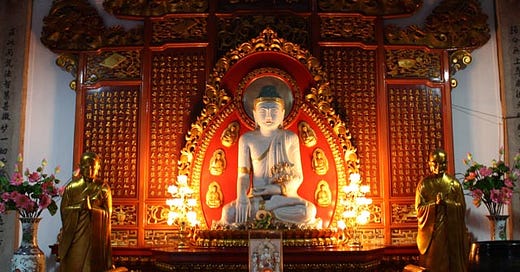Putuo Shan in Zhejiang; Jiuhua Shan in Anhui; Wutai Shan in Shanxi; and Emei Shan in Sichuan: these are the "Four Great Buddhist Mountains of China," but that's just the tip of the iceberg. There may be hundreds of smaller peaks covered in temples, and we'll visit one of them, Tianma Shan or "Heaven Horse Mountain," in this episode of--
TEMPLE TALES!




